The Apple iPad Air 2 Review
by Joshua Ho on November 7, 2014 9:30 AM EST- Posted in
- Tablets
- Apple
- Mobile
- iOS
- ipad Air 2
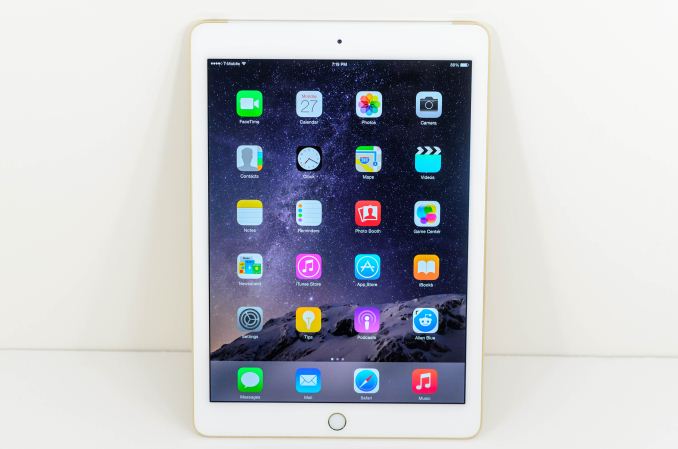
As we approach the holidays, Apple has launched a new iPad as expected. As one might expect from the name, the iPad Air 2 is more of an evolution of the original iPad Air than a clean-sheet design. This doesn’t mean that there’s little to talk about though, as Apple has gone a long way to improve every aspect of the iPad Air with this iteration. However, with this generation Apple seems to be under fire as Google attempts to push into the premium tablet space with the Nexus 9.
Without question though, the iPad line defines what an ARM-based tablet is. The iPad Air 2 is undoubtedly a part of this lineage with its focus on a large touch-screen display. This level of design minimalism is responsible for at least part of the original reaction to the tablet as a “large phone”. However, by virtue of its sheer size there are new possibilities opened up in terms of content consumption and even content creation. In the basic definition of a tablet, the iPad Air 2 definitely fits. There’s a new SoC, more RAM, a better display lens, new cameras, and an even thinner design, but all of these things don’t change the fact that this is a 9.7” display that can only be interacted with through a touchscreen. In the interest of saving space and time, I’ve included a spec sheet below to cover all bases.
| Apple iPad Air 2 | |
| SoC | 3x 1.5 GHz CPU A8X |
| RAM/NAND | 2GB LPDDR3 + 16/64/128GB NAND |
| Display | 9.7" 2048x1536 IPS LCD |
| Network | WiFi only or 2G / 3G / 4G LTE SKU |
| Dimensions | 240 x 169.5 x 6.1 mm, 437g WiFi, 444g LTE |
| Camera | 8MP Rear Facing with F/2.4 aperture, 1.3MP FFC |
| Battery | 7340 mAh (27.62 Whr) |
| OS | iOS 8.x |
| Connectivity | 802.11a/b/g/n/ac + BT 4.1, USB2.0, GPS/GNSS |
As with any other mobile device, one of the most immediate impressions one can form is that of design. This may be one of the most important areas as well, because every mobile device is constantly held or otherwise handled. These devices tend to be deeply personal as well, which means that there’s a great deal more emphasis on industrial design than a desktop tower that gets shoved into a dark corner for five years at a time.
To this end, the iPad Air 2 does quite well. The design is definitely separate from the iPhone 6 line, as the metal chamfer remains, but the form continues to be quite pleasing. On the front face of the tablet, we see a single 1.2MP camera, the display, and the home button which has TouchID built in. The glass is flat, which makes it seem noticeably different from the iPhone 6 line in that regard as it meets the chamfered edge of the back cover rather than making a seamless curve. The radius of the curve is also noticeably different as a result, simply curving in towards the center of the device rather than curving out of the device. If anything, this does make the iPad Air 2 feel a bit thicker in the fingers but the device overall is still incredibly thin.
Speaking of the back cover, there’s really almost nothing to speak of on the back cover. There’s the 8MP camera and a microphone hole, but not much else other than the large plastic RF window on the top edge of the tablet. The curve of the sides does make it seem like there’s a great deal more on the back cover though. Other than the RF window, there’s a power button and 3.5mm jack on the top of the tablet. Next to the power button are the volume buttons, but curiously no mute/lock rotation switch for this generation. I suspect that the reasons for this deletion are primarily due to user confusion, although my experiences are purely anecdotal in this regard. Finally, along the bottom of the device we see the Lightning port and two speaker grilles.
Overall, the design of the iPad Air 2 is impressive. The thin feel is really quite impressive when compared against other devices, but the weight no longer feels quite as incredible as the original iPad Air when compared to the iPad 4.
Outside of the physical design, Apple has also included a selection of two cases which include the smart cover and case, which are mostly unchanged from the previous generation except to fit the iPad Air 2. I don’t have much to complain about here although the smart case has a bit more flex on the sides than I’d like. The smart cover does have enough strength in the magnets to hold the tablet by the cover, although I wouldn't recommend doing this.


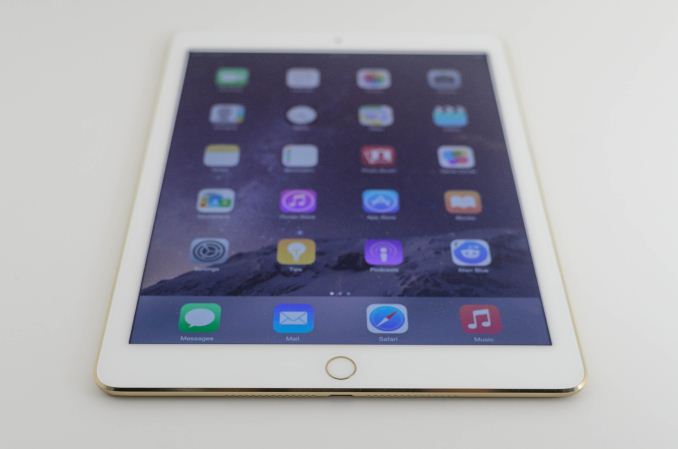
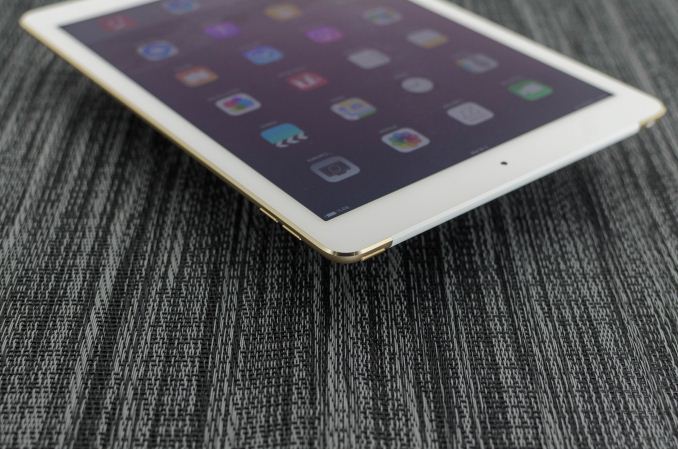
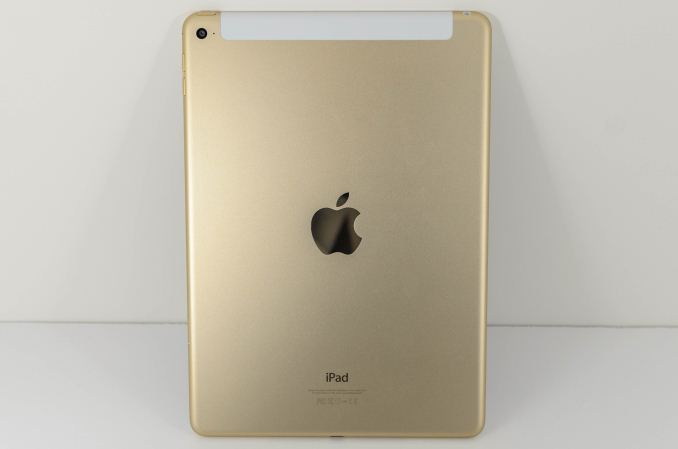

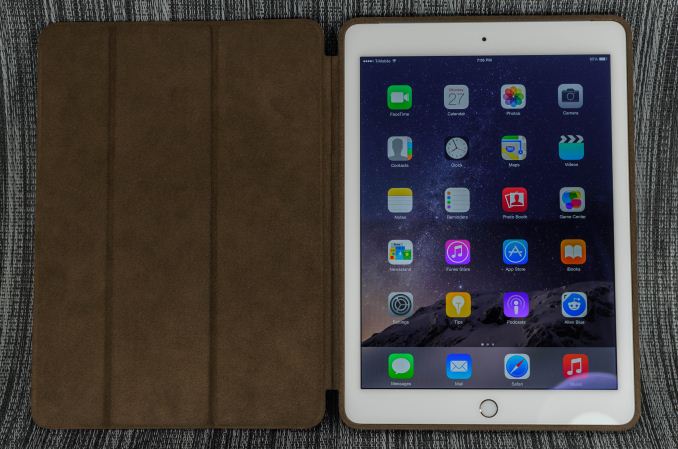








226 Comments
View All Comments
tipoo - Friday, November 7, 2014 - link
Question, don't you have to divide the final FPS of the performance degradation test with the first run, to see how much it actually went down? Otherwise you're not looking at degradation so much as total performance still. Performance may have degraded, but if it's higher to start with it's probably still higher in the end relatively.tipoo - Friday, November 7, 2014 - link
ie, if one device starts with 100FPS and degrades 40%, and the other starts at 50 and degrades 10%, the degradation on the second one is lower but the first one will still show higher on that graph.JoshHo - Friday, November 7, 2014 - link
This is definitely true, and it's taken into account when writing the review. In this case the degradation wasn't large enough to change any conclusions on the matter.kenansadhu - Friday, November 7, 2014 - link
That NVIDIA Shield tablet is looking more and more interesting for me. I hope it will get a discount this holiday seasonphoenix_rizzen - Friday, November 7, 2014 - link
Yeah, it certainly is. This looks like the proper upgrade for a 2012 Nexus 7 running Tegra3.lucam - Friday, November 7, 2014 - link
What's up to Tegra 4..:)chizow - Friday, November 7, 2014 - link
Any plans to update these graphs with Nexus 9 results? Sorry if this is mentioned in the piece somewhere, I tend to skip around before sitting down to read them in their entirety, thanks!tipoo - Friday, November 7, 2014 - link
They waited for the newer firmware on the Nexus 9 before finalizing results I believe.coldpower27 - Friday, November 7, 2014 - link
"The fact that Apple used A7 in the previous iPad Air means that on top of already being a serious step up in transistor count versus A8, compared to the iPad Air 1 the gap is even larger. A7 occupied 102mm2 and more than 1 billion transistors, so compared to Apple’s previous tablet Apple has come very close to doubling their transistor count within 1 generation. "Did you mean triple? As 3 Billion is well over doubling of 1 Billion.
Ryan Smith - Friday, November 7, 2014 - link
Doubling is correct. A7 is over 1B. I suspect it's close to 1.5B.